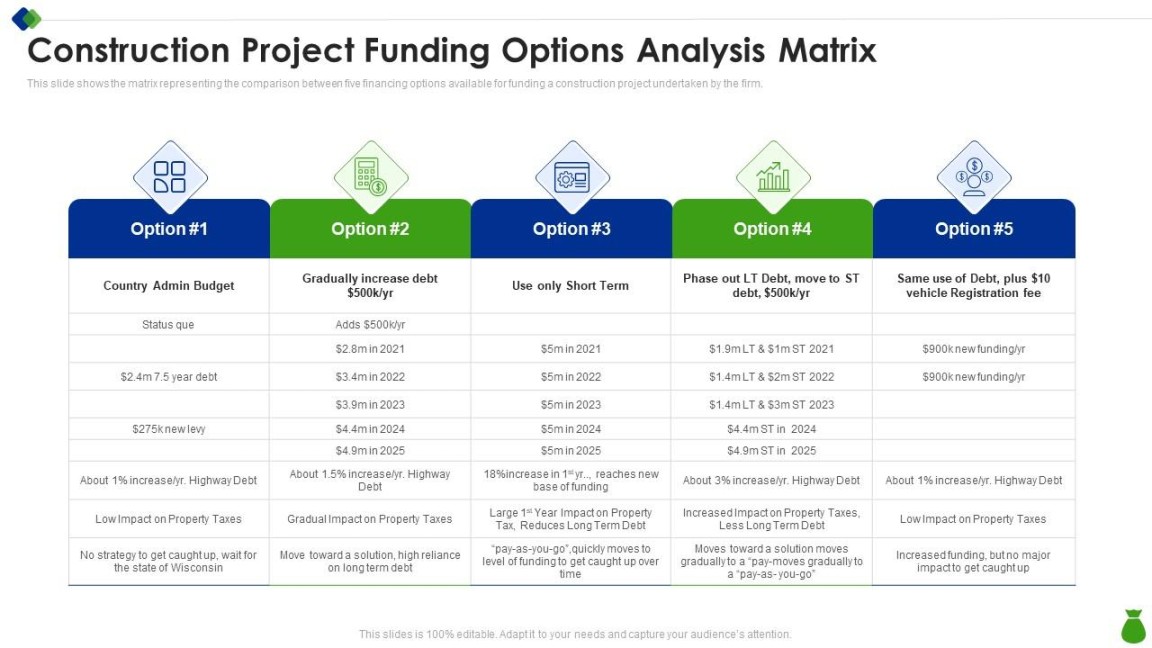Construction Project Funding: A Comprehensive Guide

Introduction
In the realm of infrastructure development, construction projects stand as the cornerstones of progress. These endeavors, ranging from the erection of towering skyscrapers to the meticulous restoration of historical landmarks, fuel economic growth and enhance the quality of life. However, the financial underpinnings of such undertakings often pose a significant challenge. This comprehensive guide delves into the intricacies of construction project funding, illuminating its definition, mechanisms, considerations, solutions, insights, and frequently asked questions.
Understanding Construction Project Funding
Construction project funding encompasses the financial strategies and techniques employed to secure the necessary capital for the execution of construction works. It entails a multifaceted process that involves identifying funding sources, evaluating financial feasibility, negotiating terms, and managing disbursements. The success of any construction project hinges upon the effective orchestration of these financial maneuvers.
Mechanisms of Construction Project Funding
The procurement of construction project funding typically involves a combination of sources, each with its own characteristics and considerations.
Equity funding stems from the contributions of project owners or investors, who assume ownership stakes in the project in exchange for a share of the profits or assets. This method offers greater control over decision-making but may limit the overall funding capacity.
Debt financing involves obtaining loans from traditional lenders, such as banks or financial institutions. These loans provide access to substantial capital but require repayment with interest, potentially increasing financial liabilities.
Governments may offer grants and subsidies to support specific types of construction projects, particularly those aligned with public interest objectives. These funding sources can alleviate financial burdens but often come with stringent eligibility criteria and reporting requirements.
Private equity and venture capital firms may invest in construction projects with the potential for high returns. This approach can provide access to significant capital but often involves equity dilution and increased scrutiny from investors.
Alternative funding sources, such as crowdfunding platforms and real estate investment trusts (REITs), have emerged as viable options for construction projects. These methods offer flexibility and may tap into new investor pools but may require careful due diligence and risk assessment.
Considerations for Construction Project Funding
When navigating the landscape of construction project funding, several critical considerations must be taken into account:
The financial requirements of a construction project are directly influenced by its scope and complexity. Larger, more intricate projects typically demand more substantial funding sources.
Construction projects inherently carry a degree of risk, ranging from unexpected delays to material cost fluctuations. Effective risk assessment and mitigation strategies are crucial to secure adequate funding and protect investor interests.
Potential lenders and investors will scrutinize the financial viability of a construction project, evaluating its projected costs, revenue streams, and potential return on investment. A sound financial plan is essential to attract funding.
The timeline of a construction project dictates the disbursement of funds and the management of cash flow. Careful planning and coordination are necessary to ensure timely payments to contractors, suppliers, and laborers.
Construction projects must adhere to various regulations and permit requirements, which may impact funding structures and timelines. Understanding and complying with these regulations is paramount.
Solutions for Construction Project Funding Challenges
Addressing construction project funding challenges often requires a multifaceted approach:
Relying on a single funding source can expose a project to undue risk. Diversifying funding sources, such as a combination of equity, debt, and grants, can mitigate financial risks and enhance overall stability.
Rigorous project planning and cost management techniques can help minimize unforeseen expenses and optimize resource allocation, thereby reducing funding requirements and improving project feasibility.
Phased funding, where funds are released in stages aligned with project milestones, can better manage cash flow and align expenditures with project progress. Progress payments can incentivize contractors and maintain project momentum.
Exploring alternative funding sources, such as crowdfunding or partnering with experienced real estate developers, can expand funding opportunities and tap into new investor networks.
Maintaining transparent and up-to-date financial records and providing regular reports to stakeholders can foster trust and confidence, potentially attracting additional funding and enhancing project credibility.
Insights into Construction Project Funding Trends
The construction


